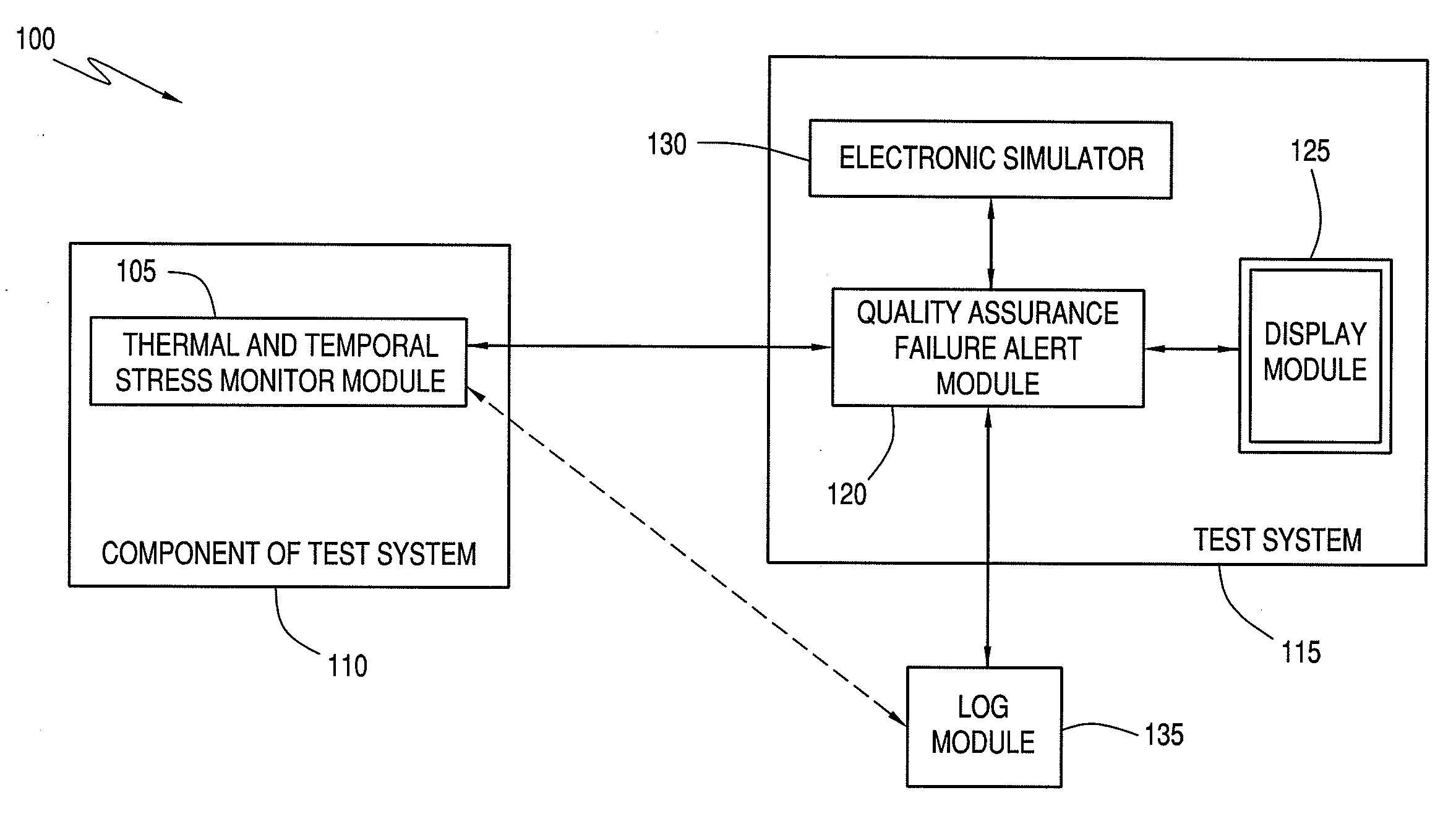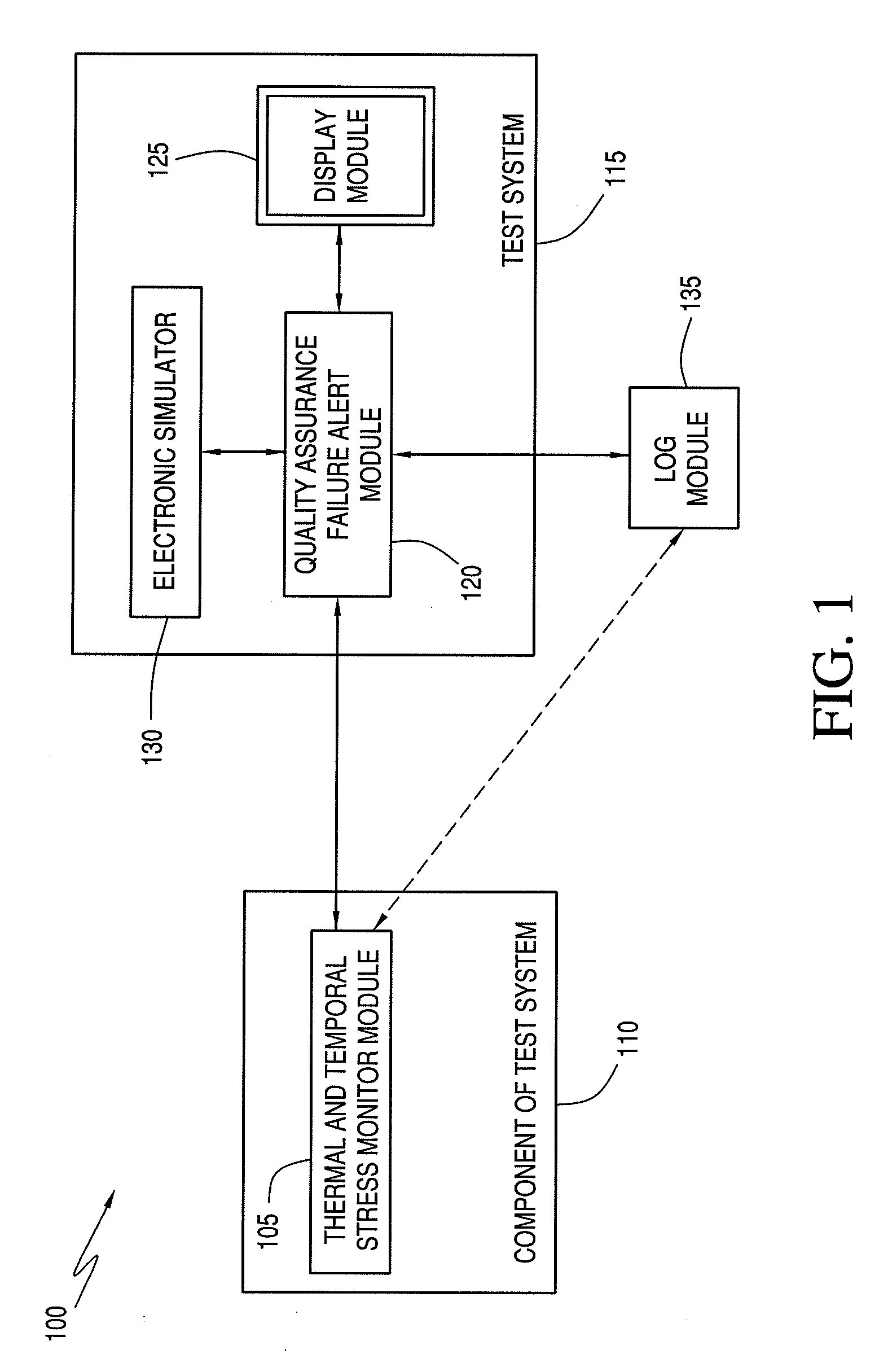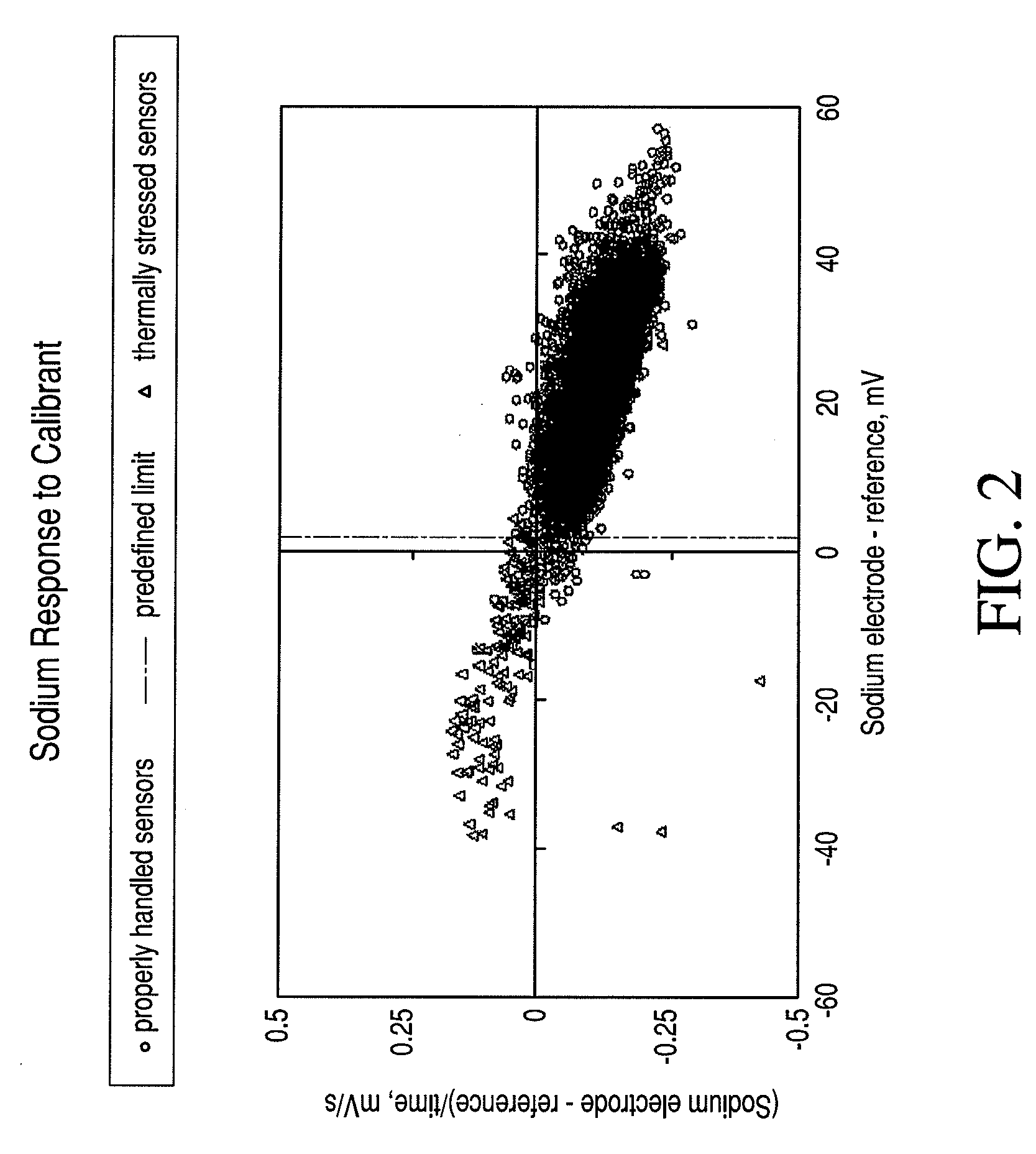Quality assurance system and method for point-of-care testing
- Summary
- Abstract
- Description
- Claims
- Application Information
AI Technical Summary
Benefits of technology
Problems solved by technology
Method used
Image
Examples
example 1
[0106]Verify the presence of calibration fluid. Calibration fluid may not be present if cartridge handling has ruptured the calibration fluid package within the cartridge. The verification is achieved by a measurement of electrical resistance across the sensor area of the cartridge. Failure to achieve an expected resistance in such a failsafe test results in the suppression of the analytical result and display of an error message to the user (e.g., via the display module 125).
example 2
[0107]Verify the sample was properly positioned within the sample chamber. If the sample volume inserted into the cartridge is either too great or too little, expected characteristics of the electrical signal between sensors will not be attained. Failure to achieve an expected result in such a failsafe test results in the suppression of the analytical result and display of an error message to the user (e.g., via the display module 125).
example 3
[0108]Verify the ambient temperature is within range. An electronic thermometer in the test system 115 records the ambient temperature. If the ambient temperature is outside the specifications, an error message is presented to the user (e.g., via the display module 125), and the test cycle is not initiated. Experimental support for the applicability of such a failsafe test was obtained by intentionally exposing cartridges to thermal stress. Graphical representations of such a phenomenon are illustrated in FIGS. 2, 3, and 4 for sodium, blood urea nitrogen, and calcium, respectively, which are x-y plots of cal-volt data (x-axis) versus cal-drift (y-axis). These plots include the current system cal-volt and cal-drift threshold limits.
[0109]According to an exemplary embodiment, if the failsafe was triggered by an operator error or component 110 fault, the user is informed and instructed via display module 125 to run another component 110. Such a failsafe protects against systematic erro...
PUM
 Login to View More
Login to View More Abstract
Description
Claims
Application Information
 Login to View More
Login to View More - R&D
- Intellectual Property
- Life Sciences
- Materials
- Tech Scout
- Unparalleled Data Quality
- Higher Quality Content
- 60% Fewer Hallucinations
Browse by: Latest US Patents, China's latest patents, Technical Efficacy Thesaurus, Application Domain, Technology Topic, Popular Technical Reports.
© 2025 PatSnap. All rights reserved.Legal|Privacy policy|Modern Slavery Act Transparency Statement|Sitemap|About US| Contact US: help@patsnap.com



